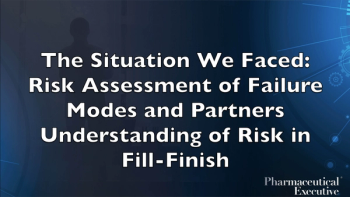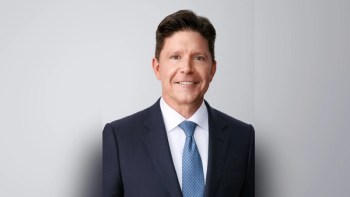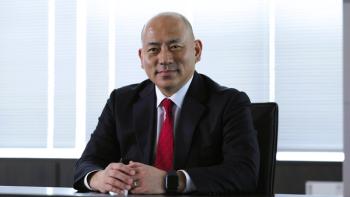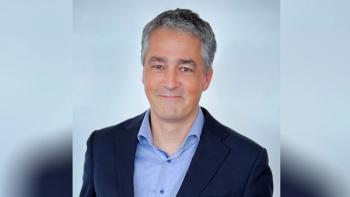
- Pharmaceutical Executive-05-01-2016
- Volume 36
- Issue 5
Steering the Change: GSK's Jack Bailey
A conversation with GlaxoSmithKline's US Pharmaceuticals head Jack Bailey.
Pharm Exec sits down with industry veteran Jack Bailey, who discusses his onboarding strategy as new president of GlaxoSmithKline’s US Pharmaceuticals business along with the progress of GSK’s novel-and often controversial-approaches to sales force compensation and transparency in information disclosure.
PE: Everyone’s career trajectory is a mosaic of professional experiences reinforced by personal relationships, culture, and background. Can you identify the cumulative forces that shaped your career and brought you to your present position as president of GSK’s US pharmaceutical operations?
BAILEY: It was family that led me into healthcare. My mother was an ICU nurse. I recall her very emotional experiences in caring for sick people. It also served as a preview of the issues confronting the health sector today, especially in the resource demands on our system of care. My father became a commercial
airline pilot after military service, and in that role he worked for an industry with a safety culture committed to never making the same error twice. Compare that to healthcare, where it still takes, on average, 17 years to institutionalize a simple clinical practice guideline. I learned from my father’s business that patients don’t have to settle for persistent lapses in quality and safety, at high cost.
All this led me to embrace science in my undergraduate years, majoring in biology with a focus on genetics. I spent a year working in a research laboratory, but eventually realized it was the business part of science that interested me. That led to an MBA degree, which, in turn, persuaded me to seek employment in a pharmaceuticals company with a strong management training track. That company turned out to be Eli Lilly, where I spent the first 18 years of my career.
A transformational experience for me was serving as country manager for Lilly’s business in South Africa. The country was on the frontline of a public assault on manufacturers of HIV medicines, clarifying the reputational and access challenges uniquely associated with our industry. It was a defining moment for innovative R&D producers. I was fortunate to be exposed to it, providing lessons on how to engage as an effective advocate of policy that guides my work today. In addition, Lilly at the time was participating in a local joint venture with Glaxo, so I was able to gain exposure to what eventually became GSK.
PE: How would you compare the cultures of the two companies?
Bailey: The culture and values are similar, but the difference I see with GSK is a greater willingness to experiment-push the envelope-in changing the business model. Examples where GSK is leading the industry are our commitment to transparency in clinical trial results; eliminating physician payments; and our new commercial model that puts the patient interest first. These were seen as game-changers at the time. We now think the rest of big Pharma is moving in our direction.
PE: You assumed the top US job in GSK pharmaceuticals in February 2015. What agenda did you set for your 5,000 colleagues during those mission-critical first 100 days?
Bailey: My principal objective was to keep the focus on our strengths as a business. A transition in leadership always creates some uncertainty. I thought it was necessary to maintain continuity with initiatives begun under the previous regime. There was a lot of good to build on.
But it was also true that the organization had been undergoing significant change well before I took on the top job. Change can be unsettling to many colleagues, so it was doubly important that I kept explaining the initiatives underway. I wanted to be very clear that no one was traveling alone and that it was important we were all together in terms of the direction GSK was taking.
Even though I had a high profile, having managed two of the four business units here in the US, I resolved to make myself very visible. I spent much of the first 100 days listening to colleagues in small group settings. The goal was to engage colleagues on two levels: the head and the heart.
One fact became evident very quickly. GSK had strengths-but there was also stress. In a relatively short period of time, GSK had supervised the launch of eight products in the US. Deploying so many new assets put a lot of strain on
the capabilities of the organization. We had a resources problem. The message I wanted to convey is that, while there would undoubtedly be more changes to cope with, the approach would be more fully aligned and inclusive of the rank and file. That, in turn, required more candor-highlighting not just the good news but what is not going well, too.
Finally, I spent time putting together my new leadership team. I sought more balance in the group, combining those with deep experience in the US marketplace with people with a more global perspective.
PE: Your leadership of GSK’s US operations has coincided with a major transition in the local market environment for biopharmaceuticals. How do you explain to senior management in London what’s going on here in the US?
Bailey: The simple message to HQ is the US market defies conventional thinking. It is not only big and complex; it is experiencing an unprecedented rate of change. We spend 18% of GDP-$3 trillion a year-on healthcare in this country, an amount equivalent to the GDP of France. Imagine such a cycle of “creative destruction” being imposed on the entire economy of a country of that size. It’s a daunting analogy to the radical disruptions unfolding here.
I’d also say that healthcare in the US cannot be categorized cleanly or simply. It’s not a free market, nor is it a single-payer system run by government. Instead it’s a hybrid, organized around a diversity of approaches drawing from both the public and private sectors.
The 2010 Affordable Care Act (ACA) includes many provisions around expanded access along with new service intermediaries like accountable care organizations. There are approximately 5,000 full-service hospitals, 1,200 insurers, and a shrinking number of payers. If you are a military veteran, active or retired; low-income; age 65 or older; if you are employed or self-employed-each of these groups have different routes into a very complex system.
Pressure on our business is shaped by the harsh realities of demographics and costs. Suppliers and payers must generate more value from every dollar spent on healthcare. Consolidation, integration, and accountability are combining to redirect funding streams and, with it, the face of our customers. Physicians no longer stand alone at the top of the payment hierarchy. Pharmacy benefit managers (PBMs) are limiting what physicians can prescribe through increasingly restrictive formularies.
Pharma companies have been slow to adapt to these new dynamics. It’s a work in progress. We take the view that a proactive approach to market change can improve our understanding of the customer base and differentiate us from the competition. GSK’s senior management has encouraged our efforts to build a new commercial model to do precisely that.
PE: What actions are required from big Pharma to address this new customer base?
Bailey: We have to provide more value to the customer than we have historically, whether directly from our clinical offerings or from added financial information and services. The bottom line is you have to deliver to a higher standard of performance. The second element in dealing with the customer is increasing our engagement with them. We must elicit more trust. That involves being transparent about our business, to strive for the highest ethical standards, and putting the patient interest at the center of everything we do. Our aim is to institutionalize these rules of engagement in GSK’s new commercial model.
PE: Can you summarize the main elements of this new commercial model?
Bailey: It begins with an awareness that everyone is seeking to redefine-and reassert-their role in the healthcare system. We reach out to anyone with a meaningful contribution to make in how our medicines are used and paid for-value is set by the voice of the customer. This entails finding better ways to communicate with each customer. Is it still best to connect person-to-person, or embrace the digital and online multichannel platforms where many customers now prefer to get their information?
Another element is upgrading the evidence to demonstrate the clinical merits of a drug in addressing an unmet medical need. Our ability to do that has expanded significantly in the last decade, especially with the closer alignment of R&D with the commercial side at a very early stage of development. Along with evidence is a value-based approach to pricing. GSK was an early adopter of this concept, which we began applying globally back in 2010. In fact, if you look at our last six launches, all were priced at or below pricing for the existing standard-of-care products we seek to displace. Overall, on the basis of comparative industry measures of annual price increases, GSK products ranked in the lowest quartile for each of the past five years.
PE: Can you provide a status update on the salesforce compensation realignment put in place four years ago by your predecessor Deidre Connolly? Any second thoughts about the execution?
Bailey: Changing incentives for our sales professionals was a central feature of a company-wide initiative-the trust agenda-which also included a commitment to transparency in clinical trials and ending payments for external speakers to talk about our products. But it was not just about building trust. It was to be more in step with society’s expectations. What we did was significant, removing the prospective, volume-driven numerical sales target that most of the industry operates on in favor of incentives based on the quality of the interaction with a healthcare provider. The salesforce incentive is aligned with the provider interest in doing what is right for their patients.
Change is never easy; it was a bumpy ride, at first. We have addressed it through consistent, open exchanges with sales staff to identify ways to improve. Over the past year, the incentive system has been simplified and, if you talk to our people, you will find perceptions on both sides of the sales transaction have changed. Specifically, GSK colleagues now see that the rules actually provide them with greater access to healthcare providers, who recognize the value in ensuring their time with us is spent productively-on the clinical aspects of our therapies, and how to make them work for patients.
But the bottom line is obviously GSK’s commercial performance, and here I can point to measurable results. For example, our new once-a-day drug, Breo, stands out as the seventh best out of 100 primary care products launched in the US in the last several years. On the HIV front, the two drugs from our ViiV unit, Triumeq and Tivicay, had two of the strongest launches ever in this space. And GSK has gone from having a low rating from physician groups on customer value to status as “most trusted” in the entire industry. That’s with the new incentive model. While I can appreciate what some of our competitors say, the facts show that being in step with where society and the markets are going, as we are, can be done without ceding the ability to make the sale to customers.
PE: How is GSK’s commercial model able to address a key concern for patients today-the larger share they must pay out-of-pocket for the cost of medicines, even for relatively generous plans offered by employers? Surveys indicate this is fueling much of the public opposition to industry pricing.
Bailey: GSK has a strong commitment to expanding access to our drugs. Innovation that sits on the shelf, beyond the reach of the patient, is no benefit to us. The fact that the ACA has increased coverage is a step forward-the law, which we supported when it came before Congress in 2010, was an important driver behind our move to this new commercial model.
That said, more must be done to facilitate access to medicines. GSK is committed to working with stakeholders to expand drug coverage and move access to healthcare to a better place. We have credibility in the debate due to early decisions taken by CEO Andrew Witty a decade ago to make information on our clinical trials transparent, so that any researcher could use it to form their own conclusions about our medicines. GSK also released more than 1,200 patents to allow NGOs, patients, and the public a chance to access therapies in areas where we lacked the resources or the therapeutic focus to pursue them. Our latest action in the access space is a comprehensive package of measures we announced on March 31 that includes forgoing patent filings in least-developed countries; licensing and manufacture of generic versions of our medicines in lower middle-income countries; committing our future oncology products to participation in Unitaid’s Medicines Patent Pool; and making information on GSK’s patent portfolio freely available to all.
Another example is the GSK Patient First program, which removed the incentive for our sales professionals to meet volume-based sales targets instead of pursuing the best possible clinical option for the provider and the patient. Likewise, GSK is the first pharma major to stop payments to external speakers to cite or promote our products at medical conferences. Feedback so far has been positive.
These initiatives set a precedent separate of any industry-wide consensus. We have chosen to drive change through our own organization first. But as the larger world outside struggles with the challenges of access and transparent behavior, we intend to be involved in that discussion, too. The stakes are so high-because the scientific potential is so great. It’s enormously exciting to me to see how in so many therapeutic areas our scientists are talking about cures and the full-scale eradication of disease. It raises the stakes in the effort to get to where we all want to be in making the healthcare system more open and accessible to patients who need those cures.
PE: The problem here is that other stakeholders now exercise significant market power in driving the terms on how patients obtain access to your medicines. GSK has experienced this directly with the PBM business-Express Scripts effectively removed access to Advair for millions of US patients when it removed the drug from its controlled member formulary several years ago. What was GSK’s strategy to counter that decision and keep patients on therapy?
Bailey: We have a long history of negotiating with Express Scripts, and with CVS Caremark as well. Like other pharmaceutical companies, we engage on an individualized basis and work very hard to find areas of mutual agreement. It’s not always possible, however, which partly explains why we fall short of our goal of full patient access to our medicines. We made our position clear to Express Scripts; despite that, the negotiations had an outcome we felt did not recognize Advair’s category leadership and many years of trust that physicians and patients had in the brand. Nevertheless, we chose to stay engaged with the PBM and eventually that allowed us to get back in the game. Today, virtually our entire product portfolio is available through the PBM formularies.
PE: Is there a larger lesson here?
Bailey: Perseverance counts, especially in committing to an ongoing relationship, one that limits the possibility of sudden surprises. You also must be accepting of market realities. To expect payers to reimburse every product is naïve. It’s no longer a realistic business model for them. In response, pharma companies must align their case around the patient interest. For example, in the respiratory segment, where GSK has a dominant position, we emphasize the importance of avoiding market disruptions that compromise quality care for patients. This is critical, because low rates of adherence to therapy are a key vulnerability in the respiratory space, resulting in more sickness and the costs that accompany it.
Another reality is that not all payers are in the same place in terms of capabilities to track a drug listing decision to superior health outcomes. Performance on this score is variable. It’s messy. GSK is fully committed to helping payers create access solutions that move the patient experience to a better place. Despite so much progress on innovation, to the point of curing conditions that were once chronic or incurable, the financing and delivery model is still evolving. And the cost of such innovation has stayed remarkably stable for decades, at little more than 10% of the total spend for healthcare. It proves that innovation largely pays for itself.
PE: How are you organized internally to promote the payer and patient perspective in securing access to GSK products?
Bailey: Our relationship with the patient and payer is at the center of the changes we’ve made to the organization over the past several years. R&D is now organized into Discovery Performance Units with clear benchmarks that require that the “voice of the customer” be weighed before moving compounds forward to registration. In addition, GSK has established a process called Medicines Vision that determines what evidentiary needs are required to convince payers to access our products. Frankly, it’s a tough culling process designed to separate the innovations that we might love-but the market won’t.
PE: What excites you most about the innovative science behind the treatment of respiratory ailments? What kind of progress can we anticipate in the fight against these diseases?
Bailey: Patients have more options in addressing severe asthma and COPD. We now have an array of products that allow health providers to manage virtually every aspect of the condition, starting with monotherapy and moving on to dual and triple therapy as well as the various sub-types like severe asthma, which is the approved indication for our latest launch drug, Nucala. As the medicines get better, we are seeing higher rates of adherence among respiratory patients, a segment which has traditionally been among the least compliant to therapy. One benefit we have documented with Nucala is that the 5% of the respiratory disease population with severe asthma account for fully half of the cost of respiratory hospitalizations in the US. We are five months into the launch of Nucala and it is performing above expectations. So our science is definitely filling an unmet medical need, which is what innovation is supposed to do.
PE: Do you anticipate additional product launches this year?
Bailey: 2016 will be a year focused on execution around our existing portfolio, now that the $20 billion asset swap with Novartis is complete. It’s no exaggeration to say the transaction has had the biggest transformative impact on GSK since the company emerged in its present form in 2000. With the work on that behind us, we build in more support for the 2015 rollout of Bexsero, a vaccine for serogroup B meningitis that we inherited from Novartis and now carries an impressive global franchise. We are also focusing on Nucala, for severe asthma, which launched here only in December but is experiencing stronger than expected market take-up. Finally, we are setting the stage for FDA review of a new subcutaneous delivery platform for Benlysta, an advanced biologic available via infusion since 2011 for US patients with lupus. Assuming approval, this new platform should assure Benlysta’s status as a game-changing treatment.
PE: Industry analysts are excited about the commercial potential of a new wave of biologics for respiratory diseases. GSK is the acknowledged leader in this space. How will you address pricing issues in this segment, given that most respiratory ailments are chronic and payers are used to paying less for treatments?
Bailey: New therapies bring with them new approaches to managing the cost of disease. GSK now has a full suite of treatments to address virtually every aspect of respiratory disease, at every stage of a patient’s journey. Our message is that this will translate back into efficiencies and improved outcomes for patients, savings that can be applied back in the larger system, like hospital costs. Increased adherence to therapy is another example where we can engage productively with payers in cost-effective management of respiratory disease, in all its manifestations.
PE: What about the operations cost savings promised under the asset switch deal with Novartis? Is the £3 billion target promised over three years on track?
Bailey: We have set clear synergy targets for the integration and we are on schedule to meet them. I can say we have already met the targets set for the US pharmaceuticals business, but the global businesses will continue to execute on both the consumer products and vaccines front.
PE: What about new research partnerships: any that strike you as significant?
Bailey: Our Avalon venture in San Diego looks very promising. The multi-stakeholder partnership we agreed last year with the University of North Carolina Chapel Hill and Qura Therapeutics is committed to an audacious goal: finding a cure for HIV. It is mobilizing leaders in both the public and private sector to explore a wide variety of research leads, without silos or pre-conditions. The ViiV partnership with Shionogi and Pfizer is a historic accord that has proven to be both unique and commercially lucrative.
GSK is equally proud of our in-house research. Significant contributions to the clinical development programs for a number of our respiratory products were made by our Research Triangle Park R&D teams.
PE: What are three major goals that will guide and measure your performance as president over the next several years?
Bailey: My overriding objective is to ensure our innovative capabilities in medicines and vaccines are connected to the patient. Access to innovation is front and center for me. GSK has had 10 new products approved over the past five years-more than any other big Pharma company-but that success is illusory if patients end up being deprived of therapy. I am committed to mobilizing all our capabilities to face down the whirlwind of pricing pressures and other health system disruptions in order to deliver on this commitment.
My second priority is maintaining an internal culture that embraces change in healthcare. The easiest thing to do is to deny, avoid or delay facing up to the challenges of working within a system that requires constant adjustments to accepted practice. No one likes to make hard decisions that entail risk to your own comfort zone. The GSK culture is built on the motivation we get from the impact our products have on the life of every single patient we serve. Each patient story is unique but in the end it all ties back to the truth that survival in this business depends on being adaptable.
The third goal is obvious and immutable-staying close to the marketplace. What that requires from me and the entire team here is to remain open to experimentation. It is important to me that the US affiliate is able to understand what is happening externally. Our cues have to come from outside. We must know our audiences and what motivates them. What are their pain points? What is changing around their own business and how will this influence the demands they place on us? Only this focus on the customer fuels the appetite for winning.
PE: Can you point to any “disruptive innovation” that might divert or derail GSK from obtaining these goals? Is this kind of threat from left field baked into your plans?
Bailey: There is a trend I am personally concerned about-the escalation of rhetoric against what our industry does. The intensity of this rhetoric is disturbing and it could lead to decisions with unintended negative consequences, not only for us but for the patient. GSK is committed to sitting
down with any stakeholder to provide our perspective and help them to shape their own decisions. It also gives us the opportunity to evaluate the level of threat and the prospect of a bad policy choice becoming a business reality.
It’s a crucial moment in time, because the adverse political noise coincides with an unprecedented surge in the quality of science coming from our labs. The impact is global: the WHO says that the world could be polio-free by 2019 due to revolutionary vaccines and other healthcare measures. That’s just one example; HCV is another. And there is a good chance we will eventually have a cure for the HIV virus. So there is much at stake; to me, the biggest disrupter is regulatory action, taken in the heat of the moment, which could set back progress in medicine and access for patients. This is not an outcome that works for anyone.
William Looney is Pharm Exec’s Editor-in-Chief. He can be reached at
Articles in this issue
over 9 years ago
Pharma’s Big Push for Valueover 9 years ago
Pharm Exec at the Vantage Pointover 9 years ago
Pharma Under Pressure to Curb Opioid Abuseover 9 years ago
Country Report: Franceover 9 years ago
Pharmaceutical Executive, May 2016 Issue (PDF)over 9 years ago
Pharma Under Fire for Driving "Opioid Abuse Epidemic"Newsletter
Lead with insight with the Pharmaceutical Executive newsletter, featuring strategic analysis, leadership trends, and market intelligence for biopharma decision-makers.





